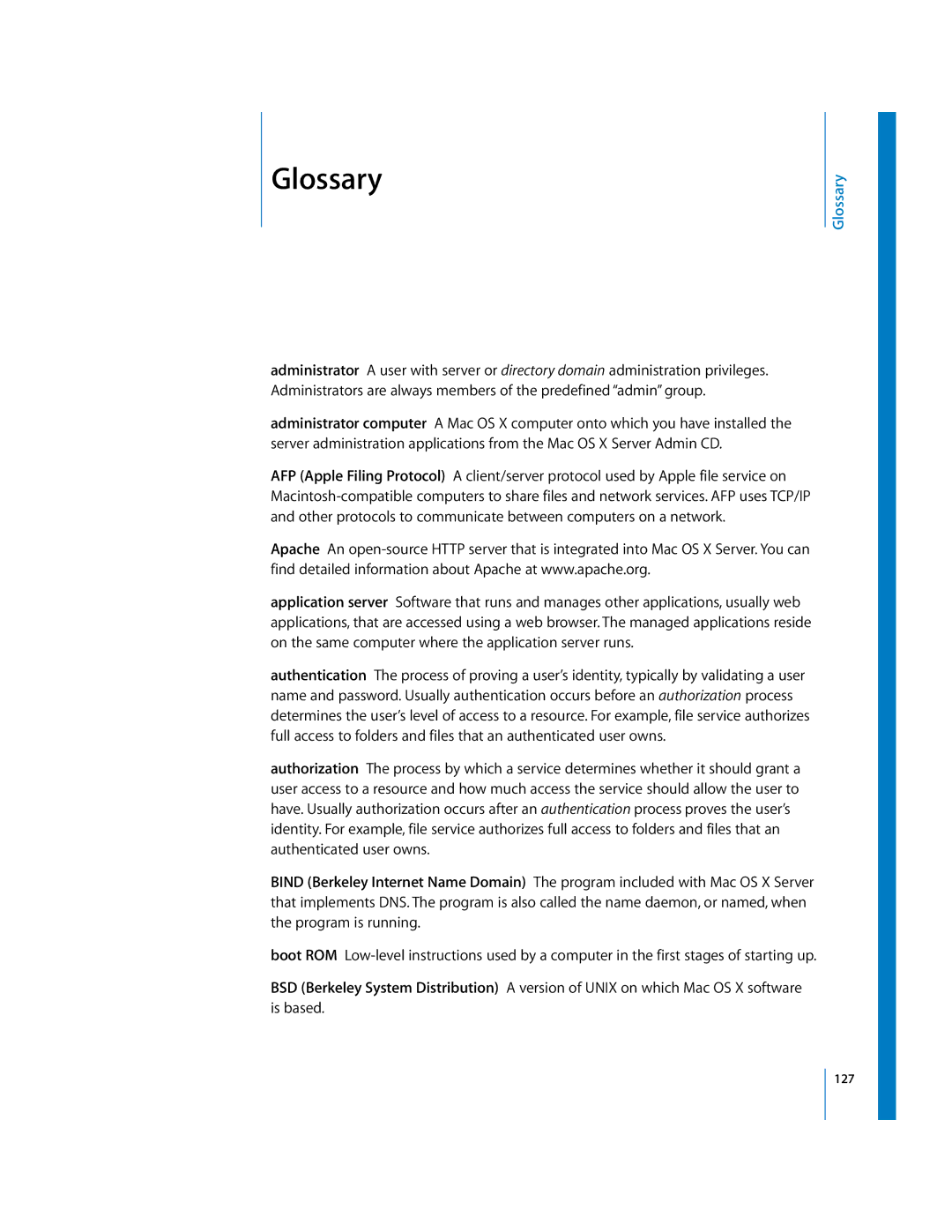
Glossary
Glossary
administrator A user with server or directory domain administration privileges. Administrators are always members of the predefined “admin” group.
administrator computer A Mac OS X computer onto which you have installed the server administration applications from the Mac OS X Server Admin CD.
AFP (Apple Filing Protocol) A client/server protocol used by Apple file service on
Apache An
application server Software that runs and manages other applications, usually web applications, that are accessed using a web browser. The managed applications reside on the same computer where the application server runs.
authentication The process of proving a user’s identity, typically by validating a user name and password. Usually authentication occurs before an authorization process determines the user’s level of access to a resource. For example, file service authorizes full access to folders and files that an authenticated user owns.
authorization The process by which a service determines whether it should grant a user access to a resource and how much access the service should allow the user to have. Usually authorization occurs after an authentication process proves the user’s identity. For example, file service authorizes full access to folders and files that an authenticated user owns.
BIND (Berkeley Internet Name Domain) The program included with Mac OS X Server that implements DNS. The program is also called the name daemon, or named, when the program is running.
boot ROM
BSD (Berkeley System Distribution) A version of UNIX on which Mac OS X software is based.
127
